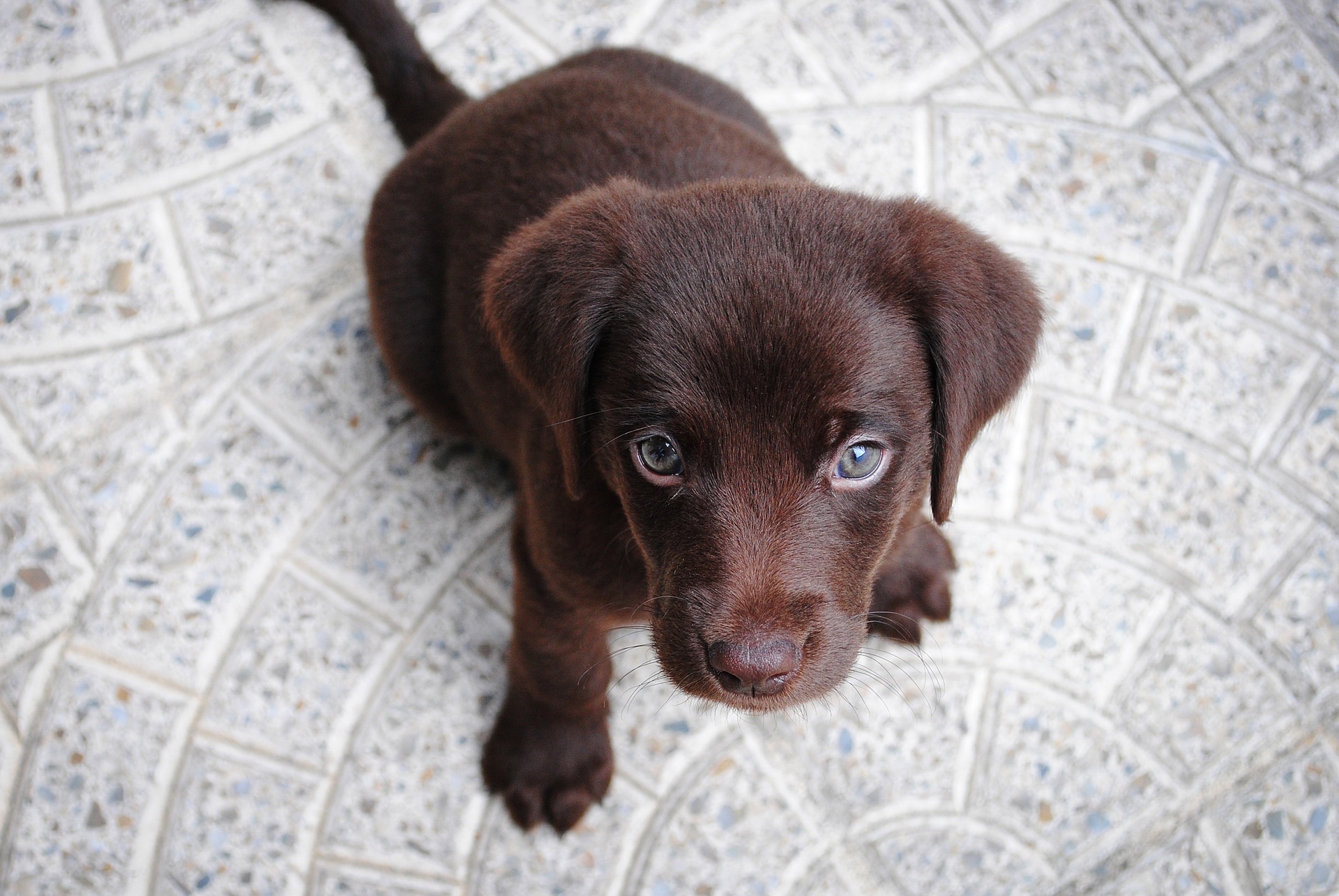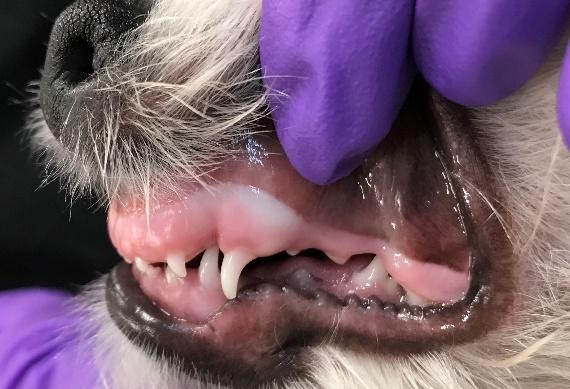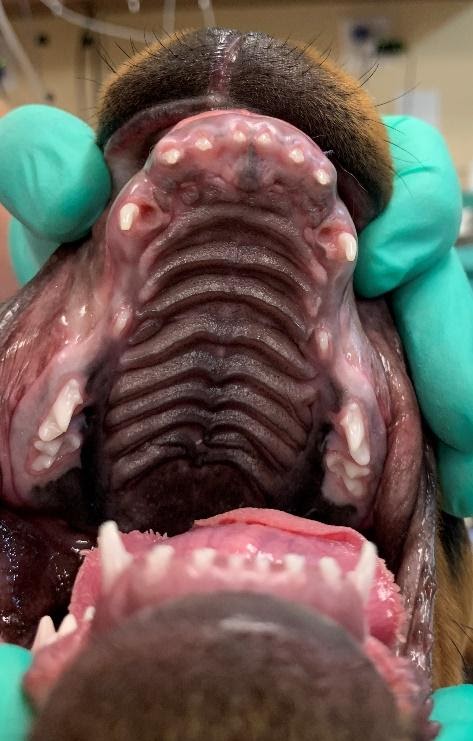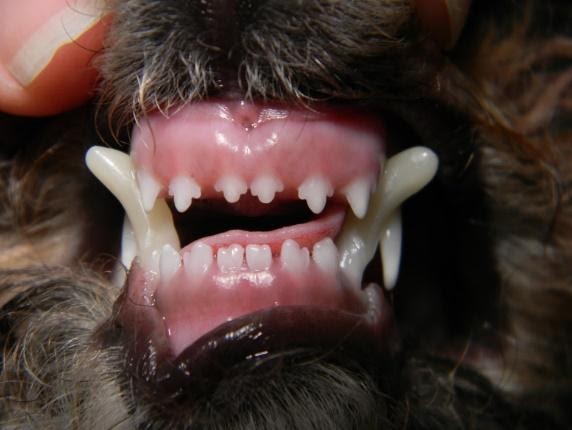
14 Oct Helping Your Puppy with Teeth Misalignment (Malocclusions)
A new puppy is always exciting and brings energy into a loving home. Once settled, it is important to have your new puppy examined by your regular, family veterinarian. It is standard to have young puppies evaluated at 8, 12 and 16 weeks of age or at the time of adoption for older puppies. During these exams, it is crucial to evaluate the dentition and occlusion (bite) in order to check for teeth misalignment in puppies (or malocclusions).
Classifying Teeth Misalignment in Puppies
At 12 weeks of age, puppies have all 28 of their deciduous (baby) teeth. For both the maxilla (upper jaw) and mandible (lower jaw), puppies have 3 incisors, 1 canine (fang) and 3 premolar teeth per side. The incisors erupt first, at approximately 3 weeks of age, followed by the canine teeth. The deciduous premolars erupt between 4-12 weeks. There are no deciduous molar teeth. When the deciduous teeth are present, an oral exam should be performed. During this time of development, a malocclusion (abnormal bite) can be identified.
Malocclusions have been classified as Class I, II, III or IV. Class I and II malocclusions will be reviewed in this blog. A Class I malocclusion is defined as a single tooth or multiple teeth in an abnormal position with the mandibles and maxilla still in a normal relationship with each other. A Class II malocclusion is defined by an abnormally short mandible with respect to the maxilla. Patients with a Class II malocclusion can also have teeth in abnormal positions.
Treating Malocclusions in Puppies
Malocclusions of deciduous teeth are frequently treated at Animal Dental Care and Oral Surgery. A common malocclusion of deciduous teeth involves the deciduous mandibular canines, which erupt in a more upright (class I malocclusion) position. This abnormal position leads to palatal trauma as the lower deciduous canine teeth come into contact with the palate. Patients with a class II malocclusion may also have teeth in traumatic contact with the palate due to the abnormally short length of the mandible. Both conditions cause significant trauma to the palate and are a considerable source of pain. Early diagnosis and intervention is important to minimize trauma and pain. The pain and discomfort from this traumatic occlusion may even be severe enough to cause behavioral abnormalities.
Deciduous teeth are sharp and cause significant trauma when they are not positioned correctly in the mouth. Treatment by either your family veterinarian or a veterinary dentist should never be delayed. Two different strategies are commonly used to treat the traumatic occlusions caused by deciduous mandibular canine teeth. Treatment strategies include either orthodontic movement of the teeth into a functional position or extraction of the deciduous mandibular canine teeth.
Treatment selection is dictated by the type and severity of the malocclusion, puppy temperament and household environment. In order to orthodontically move the deciduous mandibular canine teeth out of a traumatic occlusion, composite extensions are built on the mandibular canine teeth, directing them into a normal position (Picture 3). After these teeth tip into a normal occlusion and are exfoliated (fall out) the permanent teeth are more likely to follow into that normal position. The disadvantage of this procedure is that these composite tips are an extension of the tooth, which can snag on other objects and may act as a fulcrum that leads to fracture of the tooth. The owners need to be able to orally restrict the puppy while these extensions are in place. When these restrictions are not practical for an owner, extraction of the deciduous teeth is most often indicated. Extraction of these teeth will at least temporarily relieve the pain of this malocclusion.
Follow up evaluations are always necessary for these patients. While the composite tip extensions are in place, weekly rechecks are necessary. If the composite tips survive treatment then they will fall out along with the deciduous canines. For cases in which extraction of the deciduous mandibular canines are performed, a 2-week recheck, post-extraction is recommended. The patient is rechecked at 6 months of age to evaluate the adult teeth as they are erupting. It is common that additional treatment is necessary once the adult dentition is present. Ultimately, regardless of the treatment path taken, our primary goal is for your puppy to have a pain free and functional bite for its entire life.
Picture 1. Traumatic occlusion as a result of the mandibular deciduous canine tooth contacting the palate. The lower deciduous canine tooth should be directed into the diastema between the upper deciduous canine tooth and upper 3rd incisor. In this case the lower deciduous canine tooth is tipped inward and is contacting the palatal tissue.

Picture 2. An image of the hard palate of a puppy with a class II malocclusion (mandible is abnormally short). The deciduous canine teeth are in traumatic occlusion with the palatal tissue. Note the depressions and trauma of the palatal tissue located on the inside aspect of the upper deciduous canine teeth

Picture 3. Patient with composite tip extensions on the deciduous mandibular canine teeth in an attempt to orthodontically tip the teeth into a correct position.

Image by Free-Photos from Pixabay (10/14/2019)

